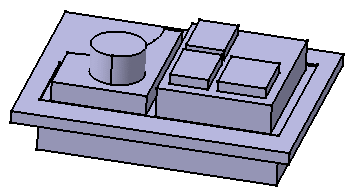Creating a Multi-Pad
-
Select Sketch.2 that contains the profiles to be extruded. Note that all profiles must be closed and must not intersect. In case a profile would be open, the application would not take it into account.
The Multi-Pad Definition dialog box appears and the profiles are highlighted in green. For each of them, you can drag associated manipulators to define the extrusion value.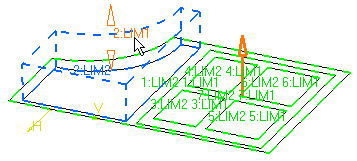
The red arrow normal to the sketch indicates the proposed extrusion direction. To reverse it, you just need to click it.
The Multi- Pad Definition dialog box displays the number of domains to be extruded. In our example, the application has detected seven extrusions to perform, as indicated in the Domains section.
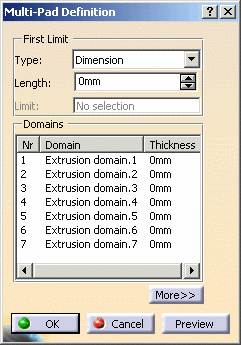
-
Select Extrusion domain.1 from the dialog box.
Extrusion domain.1 now appears in blue in the geometry area. -
Specify the length by entering a value. For example, enter 10mm.
-
You need to repeat the operation for each extrusion domain by entering the value of your choice. For example, select Extrusion domain.2 and Extrusion domain.7 and enter 30mm and 40mm respectively.
-
Note that you can multi-select extrusion domains from the list before defining a common length: multi-select Extrusion domain.3, Extrusion domain.4, Extrusion domain.5 and Extrusion domain.6, then enter 50 as the common length value.
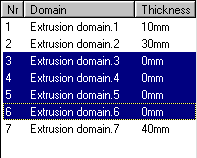
One length value is now defined for each profile of Sketch.2.
-
Click More>> to expand the dialog box.

-
In the Second Limit field, you can specify a length value for the opposite direction. For example, select Extrusion domain.1 and enter 40mm in the Length field.
Note that the Thickness section displays the sum of the two lengths. Extrusion domain.1 's total length is 50 mm.
Unchecking the Normal to sketch option lets you specify a new extrusion direction. Just select the geometry of your choice to use it as a reference.
-
Click OK to create the multi-pad.
The multi-pad (identified as Multi-Pad.xxx) is added to the specification tree.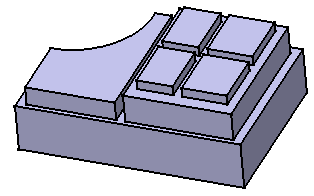
Editing a Multi-Pad
The rest of the scenario shows you what happens when :
Adding an Extrusion Domain
Example 1: the new profile is sketched outside existing extrusion domains
-
Double-click Sketch.2 to edit it: for example, sketch a closed profile outside Extrusion domain.1.
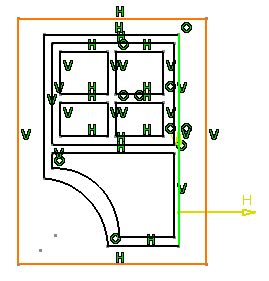
-
Quit the Sketcher. A warning message informs you that the application has detected that the initial geometry has been modified. Close the window.
-
Double-click MultiPad.1 . The Feature Definition Error window displays, providing the details of the modification.
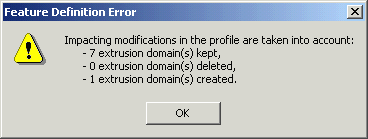
-
Click OK to close the window. The Multi-Pocket Definition dialog box reappears.
The new extrusion domain Extrusion domain.8 is indicated. -
Select it and define the value of your choice.
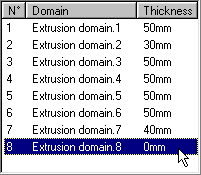
-
Click OK to confirm. Multi-pad.1 is now composed of eight pads.
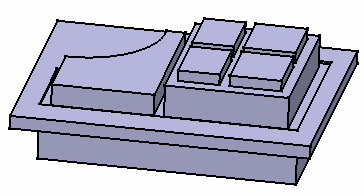
-
Double-click sketch.2 and for example, add a closed profile inside Extrusion domain.2.
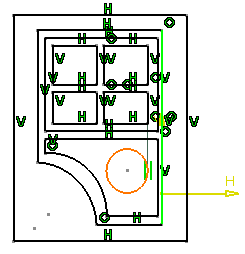
-
Quit the Sketcher. A warning message informs you that the application has detected that the initial sketch has been modified. Close this window.
-
Double-click MultiPad.1. The Feature Definition Error window displays, providing the details of the modification.
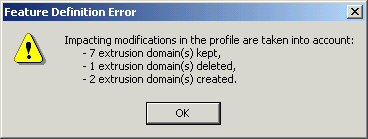
When sketching a profile inside an existing extrusion domain, the application deletes that existing domain and replaces it with a new one. This is why the message window displays :
- 1 extrusion domain deleted (Extrusion domain.2)
- 2 extrusion domains created (Extrusion domain.9, which replaces Extrusion domain.2 and Extrusion domain.10)
-
Click OK to close the window.
The Multi-Pad Definition dialog box reappears. Extrusion domain.2 is no more displayed. On the contrary, two new extrusion domains Extrusion domain.9 and Extrusion domain.10 are indicated with 0mm as their default thickness.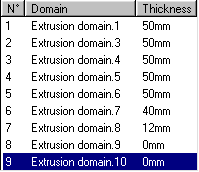
-
Select Extrusion domain.9 if not already done and define 30mm as the length value.
-
Select Extrusion domain.10, that is the circle, and define 60mm as the length value.
-
Click OK to confirm.
Multi-pad.1 is now composed of nine pads.
Deleting an Extrusion Domain
-
Double-click Sketch.2 and for example, delete Extrusion Domain.6.
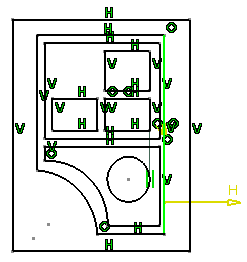
-
Quit the Sketcher: the application has detected that the initial sketch has been modified:
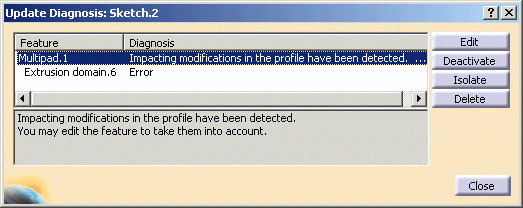
-
To tackle the problem, you can:
- edit or delete MultiPad.1.
- or you can edit or delete Extrusion domain.6
Make sure that MultiPad.1 is selected and click the Edit button. The Feature Definition Error window displays, providing the details of the modification.
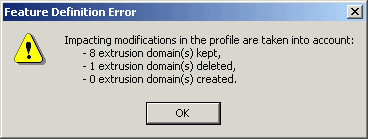
-
Click OK to close the window.
The Multi-Pad Definition dialog box reappears. Only eight extrusion domains are indicated in the Domains category.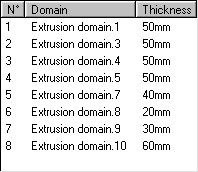
-
Click OK to confirm.
The new multi-pad feature is composed of eight pads.